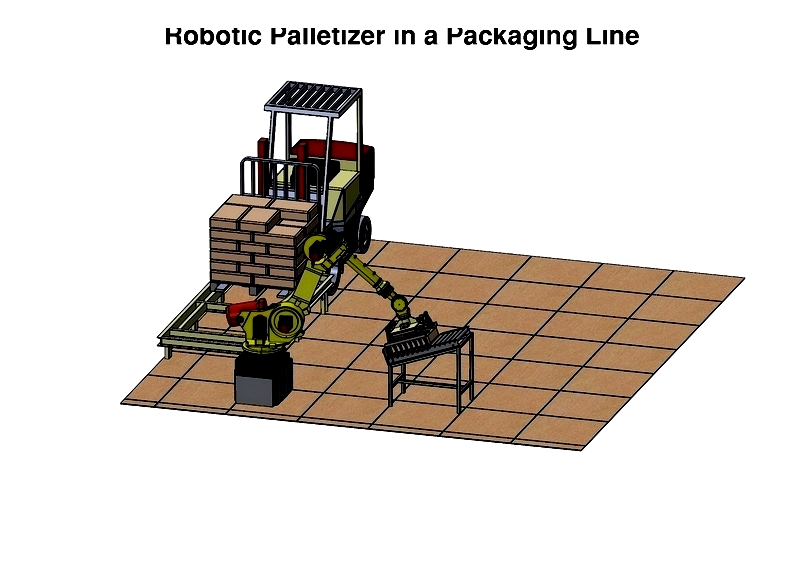Introduction
This article provides comprehensive information about robotic palletizers.
Continue reading to discover:
- What robotic palletizers are
- The history of palletizing
- Benefits of robotic palletizers
- Various types available
- And more...

Chapter 1: What is a Robotic Palletizer?
A robotic palletizer is a palletizing machine that uses a robotic arm to carefully pick, orient, and place items into organized stacks. These advanced systems provide advantages like lower initial costs, greater flexibility, and the ability to perform multiple tasks. However, limitations in speed, product size accommodation, and durability mean they haven't completely replaced traditional palletizers in all applications.

Like other palletizer systems, robotic palletizers employ the unit load method. This approach groups materials together for more efficient handling by moving one large unit rather than many small items. Finished products are typically packed in boxes, cases, trays, or crates that are then combined into larger shipments supported by pallets or roll cages. The former are called secondary unit loads, while the latter are known as tertiary unit loads.
Chapter 2: History
Before automatic palletizing systems existed, workers manually stacked products onto pallets for warehouse storage and distribution. This labor-intensive process was slow, limiting throughput and increasing costs. As industries expanded and supply chain demands grew, particularly in food and beverage, pharmaceuticals, and consumer goods, the drawbacks of manual palletizing became more evident.
Pallets and improved pallet handling technologies emerged as vital logistics solutions in the early 1900s. Their adoption accelerated during World War II when the efficient transport of heavy loads demonstrated the need for better material handling equipment and optimized warehouse operations. This era marked a significant shift in industrial automation as businesses sought ways to enhance storage efficiency and minimize handling time.
Lamson Corp.'s development of the first mechanical palletizer in 1948 was a major breakthrough for the packaging industry. This early row-forming palletizer organized products in a designated area before automatically transferring each layer onto a pallet. By repeating this process until completing a full pallet load, the system helped companies reduce labor needs and improve consistency. The conventional palletizer paved the way for subsequent advancements in automated stacking solutions.
The 1980s saw the introduction of robotic palletizers, which significantly boosted efficiency and adaptability for production lines. These systems use robotic arms with specialized end-of-arm tooling (EOAT), including mechanical, suction, or magnetic grippers, to handle diverse products precisely and quickly. The automated process picks products from conveyors or accumulation systems and arranges them on pallets according to programmed patterns. Today's robotic palletizers often incorporate vision systems and sensors to improve accuracy and accommodate different product shapes and sizes, making them indispensable in high-speed packaging lines and Industry 4.0 smart factories.
As businesses pursue higher throughput, reduced costs, and improved safety, automated palletizing solutions continue advancing. When evaluating palletizer systems, manufacturers and distributors should consider factors like throughput requirements, product variability, facility space, and integration with existing operations. Modern palletizing offers scalable solutions ranging from semi-automatic to fully robotic systems, meeting diverse needs from small businesses to large distribution centers. Advanced pallet handling equipment enhances supply chain efficiency, reduces manual labor, and supports smooth logistics in today's fast-moving market.




